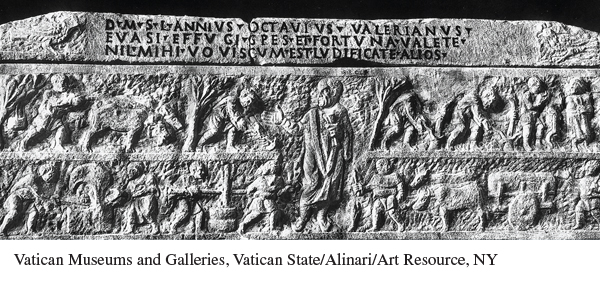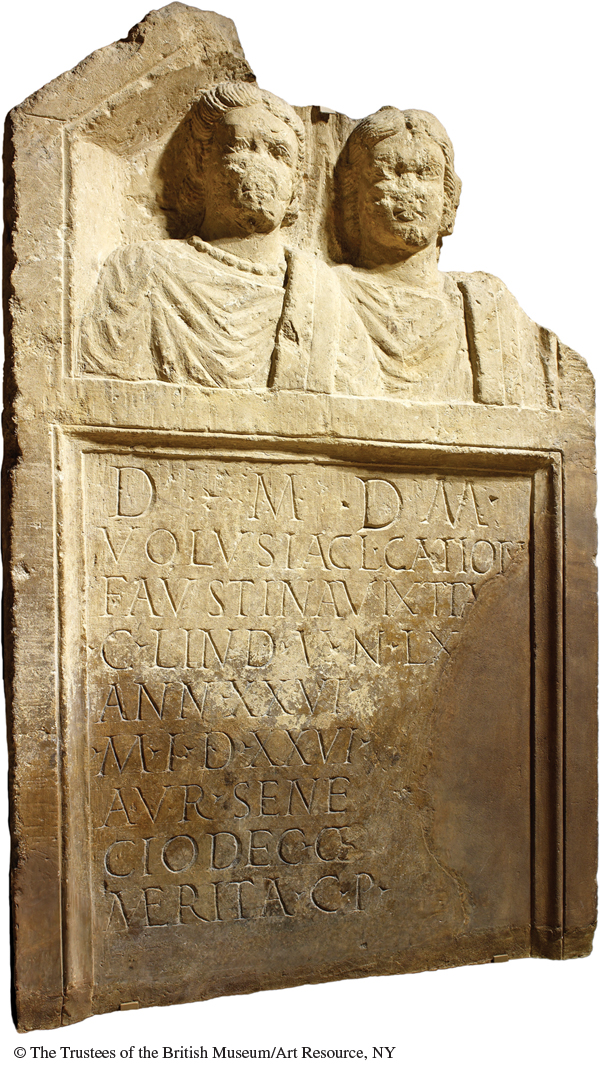A History of Western Society: Printed Page 172
Living in the Past
Roman Epitaphs: Death Remembers Life
R omans who could afford them used tombstones and sarcophagi — stone coffins — to commemorate their own lives or those of the deceased and often to share their personal philosophies. They ordinarily expressed themselves seriously in inscriptions that are also intimate in tone. A simple tombstone reads: “To the spirits of the dead. T. Aelius Dionysius the freedman made this while he was alive both for Aelia Callitycena, his most blessed wife with whom he lived for thirty years with never a quarrel, an incomparable woman, and also for Amelius Perseus, his fellow freedman, and for their freedmen and those who come after them.”* Paprius Vitalis paid tribute to his deceased wife: “If there is anything good in the lower regions — I, however, finish a poor life without you — be happy there too, sweetest Thelassia . . . married to me for forty years.† A tombstone from Roman Britain (opposite) reads: “Volusia Faustina, a citizen of Lindum, lived 26 years, 1 month, 26 days. Aurelius Senecio, a councillor, set this up to his well-
Others enjoyed their prosperity with wry gratitude. His sarcophagus shows Lucius Valerianus calmly looking over his very prosperous estates where the workers most likely included slaves (below). Yet his epitaph states: “I’ve escaped; got clean away. Good-


QUESTIONS FOR ANALYSIS
- Examine the tombstone and sarcophagus illustrated here. How do the images on them fit with the epitaphs inscribed on them quoted here?
- Consider all the epitaphs. What do they tell us about Roman attitudes toward life and death?